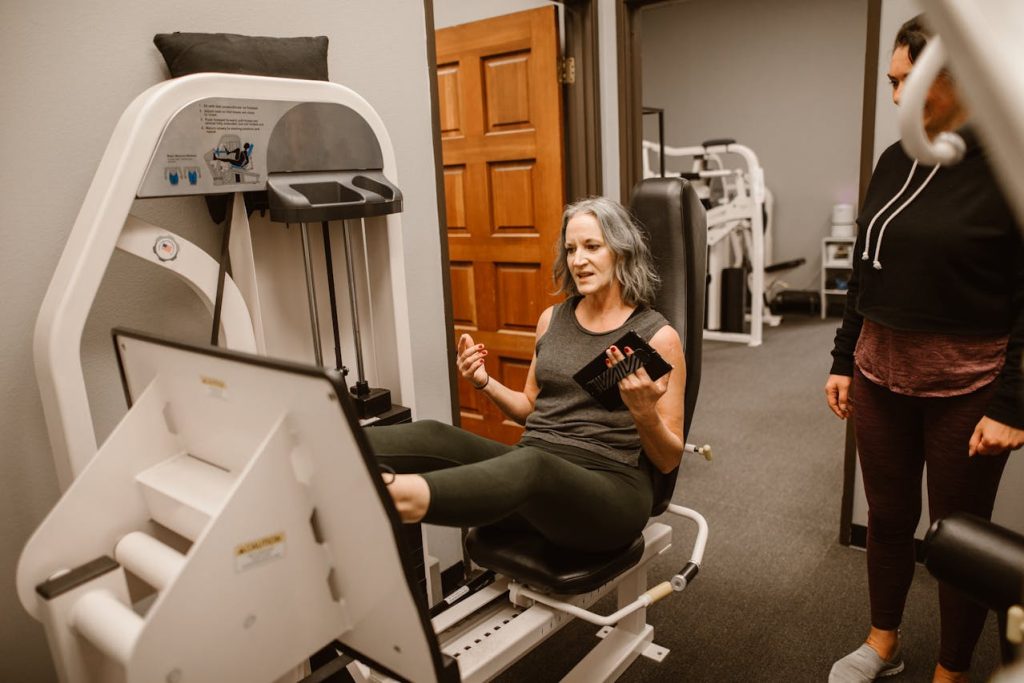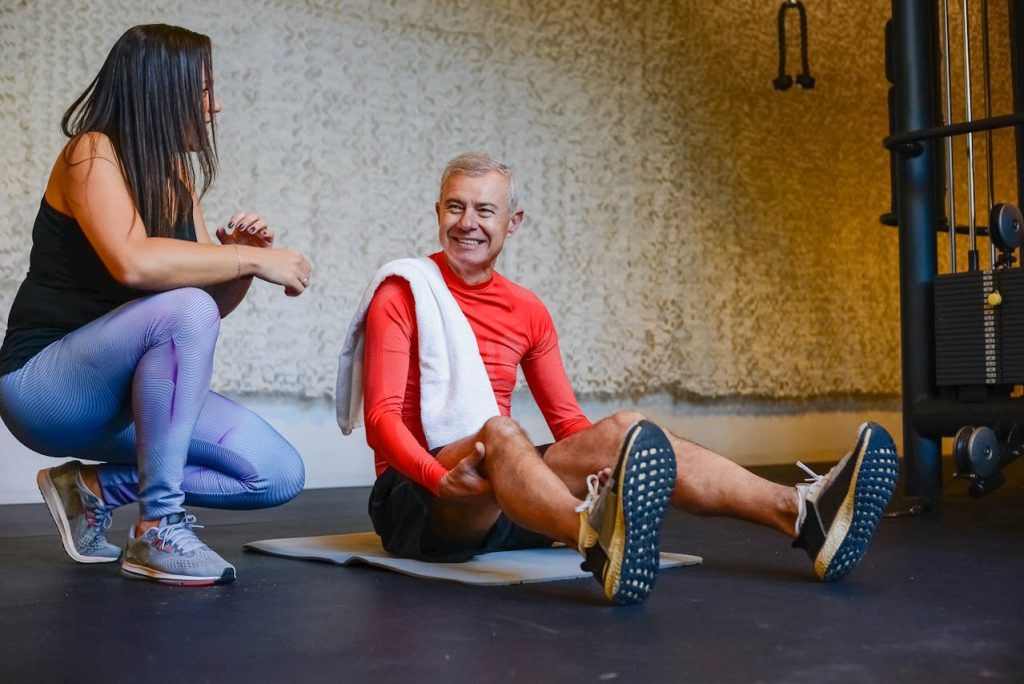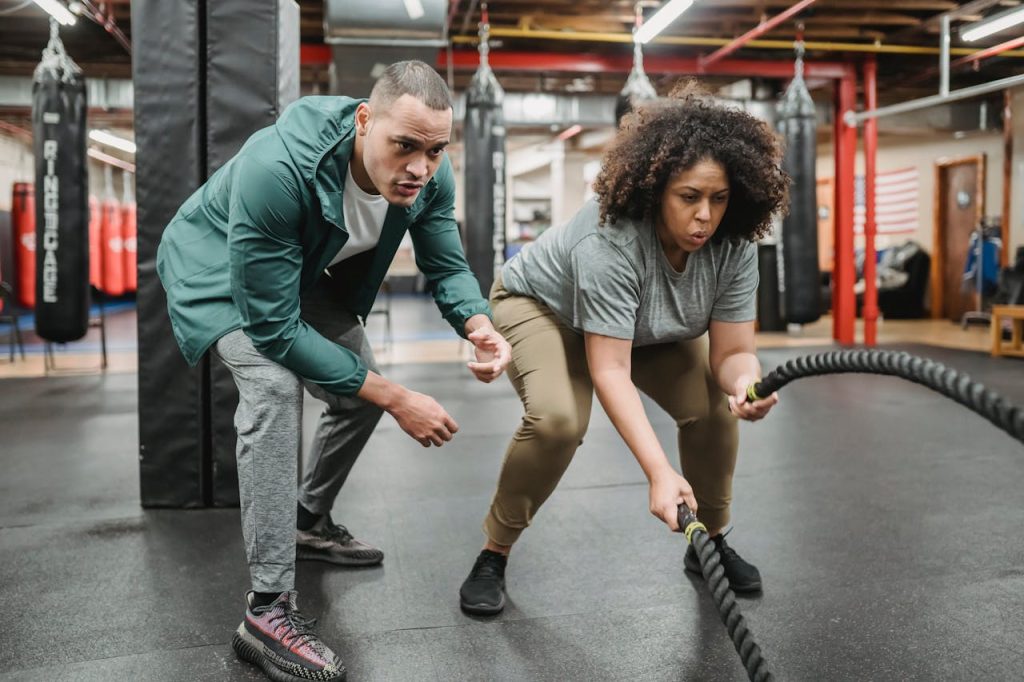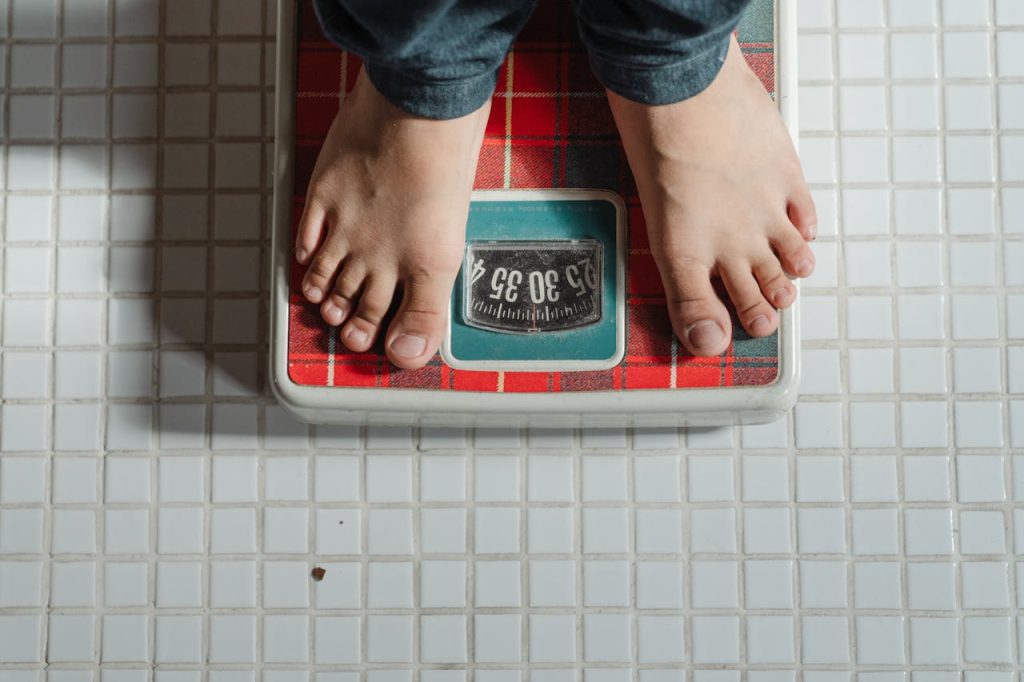Aging brings wisdom, perspective, and often a renewed desire to prioritize health. But it can also introduce changes—both physical and emotional—that affect how motivated you feel. After 60, your health goals might shift, your energy may fluctuate, and your routines may need adjusting. Staying committed takes a slightly different approach than it might have in your 30s or 40s. The good news: with thoughtful planning, small steps, and a supportive environment, you can continue to thrive and enjoy an active, fulfilling life.
This guide explores why motivation changes after 60 and how to build lasting habits around movement, nutrition, mental care, and social connection. It also shows you how to use your environment, technology, and your own history to strengthen your resolve.

Key Takeaways
- Motivation after 60 naturally shifts due to physical, mental, and social changes.
- Tailoring health rituals with low-impact exercise and adaptable routines makes success more likely.
- Mental health and mindfulness practices are just as important as physical activity.
- Building a robust support network—family, friends, community groups—feeds motivation and accountability.
- Tracking progress, rewarding small wins, and using technology can keep you engaged.
- Setbacks aren’t failures; they’re part of the process and can inform stronger habits.
Why Motivation Changes After 60
Aging is not just about gray hair or retirement. It’s a complex transition that influences your body, mind, and social circles. Understanding these changes can help you work with them, not against them.
Physical Shifts
Common physical changes after 60 include:
- Lower energy levels and slower recovery after exertion
- Joint pain, stiffness, or reduced flexibility
- Chronic conditions such as arthritis, heart disease, or diabetes
- Balance issues or loss of muscle mass
These changes can make daily activities or workouts more challenging than they used to be, sometimes discouraging people from even starting. Yet movement remains essential for maintaining strength, bone density, and mood. The key is adjusting intensity and type.
Practical Adjustments:
- Swap high-impact workouts for low-impact alternatives such as brisk walking, swimming, water aerobics, or cycling on a stationary bike.
- Include strength training with light weights or resistance bands two to three times a week to combat muscle loss.
- Practice yoga, tai chi, or stretching for balance and range of motion.
- Schedule rest days or shorter sessions to give your body time to recover.
Even small improvements matter. For example, challenge yourself to increase your daily steps by 500 each week or maintain a yoga pose a few seconds longer every day. Incremental growth builds confidence and helps you feel proud and motivated.
Mental Adjustments
Cognitive and emotional changes can also affect motivation:
- Slower processing speed or memory lapses
- Sleep changes (waking earlier, lighter sleep)
- Higher risk of depression or anxiety after life transitions
Keeping your mind active boosts your mood and can increase your drive to care for your body.
Evidence-Based Tips:
- Engage in mentally stimulating activities—reading, puzzles, crosswords, learning a new language or skill, or playing a musical instrument.
- Use memory games or brain-training apps to sharpen focus.
- Practice mindfulness or meditation. Even two minutes of slow breathing can calm stress hormones.
- Reframe negative self-talk with positive phrases (“I’m improving every day” instead of “I’m too old for this”).
Set goals that match your mental energy. Breaking major health transformations into manageable steps—like adding a 10-minute walk before breakfast or swapping one sugary snack for fruit—keeps the process realistic and rewarding.
Social Evolution
Relationships often shift after 60. Retirement, relocation, or loss of loved ones can shrink your social network. Yet social support is one of the strongest predictors of sticking to healthy habits.
How To Stay Connected:
- Join local groups, walking clubs, gardening circles, or senior centers.
- Attend community classes or workshops related to cooking, art, or fitness.
- Schedule regular check-ins with friends or family to discuss your progress.
- Use online forums or virtual meetups if travel is difficult.
A 2018 study found that people who exercised with others were significantly more likely to stick with it than those who went solo. Support counts—lean on your tribe when you need a lift.
How To Build Lasting Health Motivation
1. Redefine Your “Why”
Motivation begins with clarity. Ask yourself what truly drives you. Maybe you want to:
- Keep up with grandchildren without fatigue
- Travel comfortably and explore new places.
- Reduce reliance on medication.
- Feel more energetic day-to-day.
Write these reasons down. Seeing them on paper makes them real and gives you a reference when motivation dips. Your “why” will evolve, so check in periodically and refresh it. Share it with family or friends so they can support you.
2. Start Small
Large goals are inspiring but can also be overwhelming. Break them down:
- Begin with five minutes of walking if 15 feels too much.
- Add one extra serving of vegetables per day rather than overhauling your diet overnight.
- Start with a single yoga pose or one short mindfulness exercise daily.
External cues help: keep your walking shoes by the door, set phone reminders, or mark a calendar to visualize your progress.
3. Create Rituals
Rituals anchor your day and make healthy actions automatic. Examples:
- Morning: drink a glass of water, stretch for two minutes, jot down a gratitude note.
- Afternoon: short walk after lunch, stand up to stretch every hour.
- Evening: light stretching or mindfulness practice to wind down for sleep.
Consistency matters more than perfection. Adjust your routine if your energy shifts, but keep a few core habits constant to provide structure.
4. Track Progress
Monitoring your actions makes you more aware and gives a sense of accomplishment. Use:
- A simple notebook or spreadsheet
- Step counters, pedometers, or smartwatch apps
- Nutrition or sleep-tracking apps
Establish tangible objectives—“I’ll reach 5,000 steps daily for two weeks”—and celebrate milestones. Rewards can be non-food treats like a new book, a relaxing bath, or fresh flowers.
5. Find Joy
Enjoyment fuels consistency. Choose activities that feel good:
- Gardening, dancing, swimming, biking, or playing with grandchildren
- Listening to music or podcasts while you walk
- Group classes where socializing adds extra fun
Take a moment daily to notice blessings—a sunny day, a conversation, a small victory. Centering joy in your journey sustains motivation for the long haul.

Overcoming Common Health Hurdles
Staying motivated after 60 frequently requires navigating both new and old health hurdles. If you identify what gets in your way, you can map out a defined strategy for incremental advances. These are the huddles, why they’re important, and how you can handle each one.
- Feeling lethargic, battling chronic illness, and fearing injury can all inhibit your motivation to remain active. Each asks for a different type of tailored solution. Setting small, achievable goals—such as a 10-minute stroll each day—prevents it all from becoming overwhelming. Building a routine, like exercising at the same time every day, gives it meaning.
- If you ever feel isolated or stuck, a support group or workout buddy can go a long way. Research indicates that individuals who walk with friends or groups keep up the motivation longer than those who slog alone. Tracking your progress does too — establish an attainable goal and reward yourself when you meet it.
- There will be setbacks. Rather than view them as failures, leverage them to learn what does work for you. Tailor your plan as you wander, be patient, and know that 15 minutes a day even brings health dividends.
Fear Of Injury
Many older adults worry about hurting themselves during exercise. You can reduce risk by:
- Learning correct form from a trainer, physical therapist, or reputable video program.
- Starting with low-impact options like walking, swimming, or gentle yoga.
- Warming up and cooling down.
- Wear proper shoes and keep your exercise area clear of tripping hazards.
Confidence grows with time. As strength and flexibility increase, so does your comfort level.
Chronic Conditions
Chronic issues such as arthritis, diabetes, or heart disease can complicate exercise. Strategies:
- Work with your doctor to design a safe plan.
- Listen to your body—some days, a gentle stretch may be enough.
- Break activity into smaller chunks, like two 10-minute walks instead of one 20-minute session.
- Learn about your condition so you can make informed decisions.
Low Energy
Energy dips are common but manageable:
- Aim for 7–8 hours of quality sleep. Maintain a consistent bedtime and limit screen time at night.
- Eat balanced meals with complex carbs, lean protein, and healthy fats.
- Schedule short breaks throughout the day to recharge.
- Choose light exercise on tired days—even a five-minute stretch can boost mood.
The Power Of Your Environment
Your environment influences your health journey more than you realize. Where you live, who you hang out with, and what you look at every day can all support or sabotage your objectives. As the saying goes, ‘it is easier to build habits in a supportive setting and stay on track. Here are some key parts of a strong environment for health and wellness:
| Element | Description | Example |
| Social Support | People who encourage healthy choices | Walking partner, support group |
| Physical Space | Organized, safe, and motivating home setup | Yoga mat in view, tidy kitchen |
| Professional Guidance | Access to health experts and resources | Dietitian, fitness coach |
| Community Resources | Local centers and groups for wellness | Wellness center, park |
| Visual Cues | Reminders for healthy behavior | Water bottle on desk |
Social Support
Positive people who care about health in your health can make all the difference. Friends and family who have your goals make you feel understood and supported, even on hard days.
Wellness clubs and groups will expand your circle and inject new vitality. When you share your progress publicly, you create accountability, and it becomes easier to maintain your plans. Group activities, such as walking clubs or fitness classes, make exercise fun and maintain your motivation. Working out with others will usually give you flatter abs, increased adherence, and more fun.
Physical Space
An uncluttered, organized home fosters healthy decisions. Leave exercise gear where you’ll see it frequently, like setting your walking shoes by the door. Keep healthy snacks — fruit, nuts — within easy reach and in sight. This simplifies the selection of what’s good for you, even when you’re drained or rushed.
Reserve a space for activity — a corner with a yoga mat or light weights. This helps make exercise automatic. Ensure your area is secure and convenient, without any stumbling risks. Sprinkle in some reminders—notes, quotes—to strengthen your determination. Breezy, tidy conditions alleviate tension and assist concentration.
Professional Guidance
| Type of Guidance | Role/Benefit | Example Professional |
| Medical Providers | Health checks, advice, and monitoring | General practitioner, nurse |
| Fitness Specialists | Personalized activity plans | Certified trainer, physio |
| Nutrition Experts | Meal planning and nutrition help | Dietitian, nutritionist |
| Mental Health | Emotional support and counseling | Therapist, counselor |
Workshops and seminars provide fresh ideas and inspiration. Fitness experts with senior health experience can guide you through workouts without injury. Your care team shares tips on trends and best practices, so you stay informed. When you utilize these resources, it means that you have a safety net and more avenues to remain committed.
Your Past Informs Your Future
Your past influences your mindset on goals and your present decisions. What you discovered in your younger years, what worked and what didn’t, can assist you in choosing the optimal steps on your health journey now. If you ever stayed on track walking every day or restricted sugar for a few months and experienced strong results, those are weapons you can once again deploy. These little victories matter. They reveal what you can commit to and what you enjoy, which helps fresh habits stick. Even hard times count. Studies show folks who embrace positive thinking and hope-seeking tend to outlive us all, with many passing the age of 85. That optimistic mindset develops from the wisdom you’ve accumulated on the journey.
Ancient decisions, such as eating healthy or exercising, have a significant impact on your current state. Those who were active in the past tend to continue moving forward. If you signed up for a sports club or walked with friends, it’s easier to continue than to begin anew. The healthy habits you develop now can translate into more years with a strong heart, sharp brain, and less pain. These selections influence your healthspan — the healthy years you live — not just your overall years. On the flip side, old trauma or stress can scar. It can influence the way you cope with transition or pressure now. If you discovered coping mechanisms, like communicating or engaging support, maintain those abilities in your arsenal.
Let setbacks be not stops, but lessons. If you faltered on your health plan in the past, see what caused that to happen. Maybe it was a hectic work schedule, family obligations, or lack of sleep. Take those lessons and schedule around them. This constructs a growth mindset. You begin to view every stumble as an opportunity to grow, not an excuse to throw in the towel. Your story isn’t just the hard parts. It’s about how you rose. Let your own past be a shove to give it another shot and to keep at it for your health, even when it gets tough.
Using Technology To Your Advantage
Keeping yourself on track with your health goals after 60 can sometimes feel like an uphill battle, but technology can provide you with a serious advantage. They’re out there, and the right tools can help you move more, eat well, manage stress, and stay connected—all in ways that are easy to use and understand.
Begin with an inventory to find what suits your lifestyle. Search for easy fitness trackers, smartwatches, nutrition apps, guided videos, meditation apps, and even game-based ones. Something like Kinect or Nintendo Wii, or Wii Balance Board, actually does get older adults moving. For example, certain researches indicate that Kinect systems rate 72.50 on the System Usability Scale, implying that users generally find them user-friendly. With their own custom systems like i-ACT, exercise is fun and useful. Many found it both enjoyable and valuable. These can help you maintain your exercise, which is crucial for aging gracefully.
Online resources, yet another smart play. There are plenty of websites and apps that provide workouts or health tips specifically targeted to seniors. Discover expert guided programs, safe moves, and a pace tailored to you. Most of these are free or inexpensive. They frequently have videos or step guides, so you can easily follow along at home. Certain programs provide feedback or reminders so that you don’t lose track of your goals.
Virtual communities and forums can sustain your enthusiasm when you’re isolated. There are groups online for practically every health goal—walking, yoga, good heart health, or healthy cooking. You’ll be able to share your progress, ask questions, and get advice from people who get what you are going through. This sort of encouragement can coast you through, even on tough days.
Other tools, such as meditation apps or nutrition trackers, assist with managing stress and maintaining healthy habits. Meditation apps navigate you through breathing or mindfulness exercises that can have you feeling both calm and focused. Nutrition trackers let you record meals and eat smarter. Some even recommend recipes or provide tips based on your objectives.
Conclusion
Motivation after 60 is not about dramatic overhauls; it’s about small, steady steps that align with your life today. By understanding how your body and mind change, creating supportive routines, and leaning on social networks and technology, you can stay committed to your health goals for years to come.
Set tangible goals, celebrate victories, and don’t be discouraged by setbacks. Use your past experiences as a guide. Design your environment to make the healthy choice the easy choice. Most of all, keep joy at the center—because a positive, enjoyable journey is one you’re far more likely to continue.
Every little bit counts. Your next victory starts with you.

Frequently Asked Questions
1. Why Does Motivation For Health Often Change After 60?
Physical changes, life transitions, and new priorities can all shift your motivation. Recognizing these factors helps you choose strategies that fit your current reality.
2. How Can You Stay Motivated To Exercise After 60?
Set small, achievable goals, monitor progress, and pick activities you enjoy. Social support and tracking tools can also boost consistency.
3. What Are Common Health Challenges You Might Face After 60?
Slower recovery, joint pain, or chronic conditions. Adjusting your schedule, using low-impact activities, and consulting professionals can help overcome these obstacles.
4. How Can Your Environment Boost Your Health Motivation?
Design spaces and routines that support healthy behaviors—keep workout gear visible, stock nutritious foods, and surround yourself with supportive people.
5. Can Your Past Experiences Help Your Current Health Journey?
Yes. Reflecting on past victories and challenges can guide present decisions, helping you avoid old pitfalls and repeat what worked.
6. How Can Technology Support Your Health Goals After 60?
Apps, wearables, online communities, and virtual classes provide accountability, structure, and new ways to stay active, eat well, and manage stress.
7. What Should You Do If You Lose Motivation?
Revisit your “why,” set fresh goals, and reach out to others for support. Remember that progress may be slow but steady, and each small step counts.
Start Your Journey To A Vibrant Retirement With Fitness Ellipsis!
Are you ready to enjoy your golden years with more energy, confidence, and a sense of purpose? At Fitness Ellipsis, we know that healthy aging isn’t just about exercise or diet—it’s about creating a balanced lifestyle that supports your body, mind, and spirit.
Our Lifestyle Coaching for Retirees is designed with your needs in mind. With personalized guidance, supportive coaching, and strategies tailored to your stage of life, we’ll help you build routines that enhance mobility, reduce stress, and strengthen overall well-being. Whether you want to stay active, improve daily habits, or rediscover motivation, our compassionate team is here to support you every step of the way.
Through customized nutrition advice, age-appropriate movement plans, stress management techniques, and ongoing encouragement, we’ll help you feel vibrant, independent, and in control of your health. This isn’t just about longevity—it’s about enjoying a fulfilling, energized retirement.Don’t wait to invest in your well-being. Join the Fitness Ellipsis family today and take the first step toward a healthier, more empowered life in retirement. Contact us now to learn how our lifestyle coaching program can help you thrive today, tomorrow, and for years to come.
Disclaimer:
This article is for informational and educational purposes only and is not intended as medical advice, diagnosis, or treatment. Nutritional needs vary by individual, especially for older adults or those with chronic health conditions. Always consult with a qualified healthcare professional or registered dietitian before making significant changes to your diet or protein intake.




